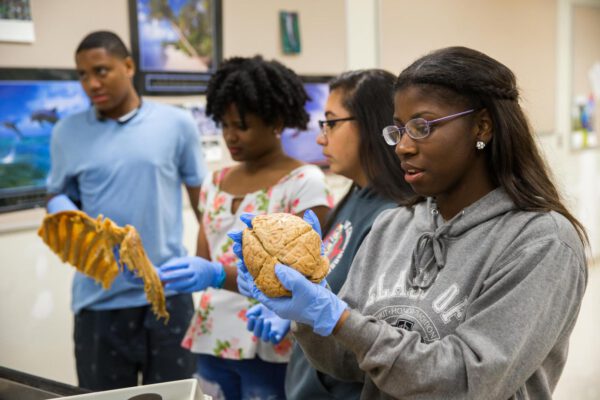Study Examines Racial Gaps in Persistence for STEM Programs
Title: Does STEM Stand Out? Examining Racial/Ethnic Gaps in Persistence Across Postsecondary Fields
Authors: Catherine Riegle-Crumb, Barbara King, and Yasmiyn Irizarry
Source: Educational Researcher
A recent study in the journal Educational Researcher finds that Black and Latino/a students who begin college as STEM majors are more likely than their White counterparts to switch majors or leave college, and that these racial disparities in student success are larger in STEM fields than in others.
The paper, by Catherine Riegle-Crumb (University of Texas, Austin), Barbara King (Florida International University), and Yasmiyn Irizarry (University of Texas, Austin), draws on longitudinal data tracking more than 5,600 college students who began college in 2004.
The researchers found that while Black and Latino/a undergraduates were just as likely as their White counterparts to begin college as STEM majors, they were significantly less likely to complete a STEM degree: 58 percent of White STEM majors persisted to earn a STEM degree as compared with only 43 percent of Latino/a students and 34 percent of Black students.
In statistical analyses, the researchers show that these racial disparities in STEM persistence are not simply a result of differences in students’ academic preparation. Even after accounting for differences in students’ socioeconomic and academic backgrounds, Black students were 14 percentage points more likely than White students to switch out of STEM majors, and both Black and Latino/a STEM majors were about 15 percentage points more likely than Whites to leave college entirely. This was not the case in fields like business, social science, or the humanities, where disparities in students’ socioeconomic backgrounds, workloads, and academic preparation better explain racial persistence gaps.
While the analysis cannot pinpoint precisely why Black and Latino/a students leave STEM fields at higher rates than their White peers, the authors suspect that STEM programs’ exclusionary structures play an important role.
“STEM degree programs and college classrooms are purposely constructed as exclusionary spaces where students must essentially prove that they deserve to stay,” the authors write. In this context, minority students “subjected to specific stereotypes about their presumed inferior cognitive and mathematical ability” may respond to experiences of racialized exclusion by switching majors or leaving college altogether.
Click here to learn more.
—Sam Imlay
If you have any questions or comments about this blog post, please contact us.


